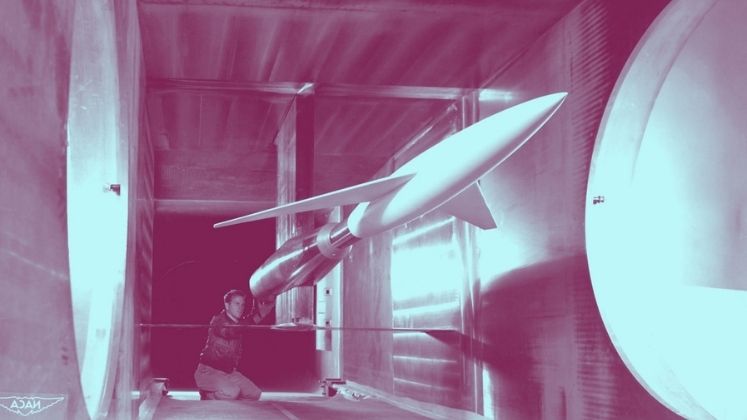The Manhattan Project is often invoked as a model for mission-driven research projects, such as the search for a Covid-19 vaccine. Daniel P. Gross and Bhaven N. Sampat argue that the broader U.S. approach to mobilising science and technology in World War II, led by the Office of Scientific Research and Development (OSRD), provides a better analogy for some contemporary R&D problems.
In the spring of 2020, as the Covid-19 pandemic caught fire, policymakers and scholars around the world began to view innovation policy as a key tool for a crisis response—and perhaps the only way out. The dominant innovation policy frameworks and institutions, however, were not designed to tackle specific, new, urgent, and mostly applied problems like those the crisis presented. In this vacuum, some U.S. observers noted that the pandemic was not the first time the country (or world) had faced a crisis where innovation could play a valuable role in speeding a resolution: science and technology were pivotal to the Allied war effort in World War II, a very different crisis which had engulfed the globe 80 years before.
In the summer of 1940, the Maginot line fell in France, Britain came under attack, and the U.S. found itself at imminent risk of being drawn into the war. At the urging of a cadre of high-ranking U.S. scientists and science administrators, in June 1940 President Franklin D. Roosevelt authorised a new National Defense Research Committee (NDRC), which later evolved into the Office of Scientific Research and Development (OSRD), to manage civilian research for war—which the U.S. officially entered a year and a half later after the bombing of Pearl Harbor. Over the next five years, OSRD grew to be a major, multi-billion dollar federal agency engaging tens of thousands of scientists in war-related research. The research it organised, managed, and funded yielded technologies such as radar, rockets, computers, nuclear fission, antibiotics, and vaccines (among dozens of others), which were not only instrumental to the Allies’ victorious outcome, but later transformed civilian life, and innovation policy itself.
OSRD grew to be a major, multi-billion dollar federal agency engaging tens of thousands of scientists in war-related research
Though World War II is often invoked as a canonical reference for crisis innovation policy, OSRD has received relatively little attention in modern policy, scholarship, and commentary, typically taking the backseat to the more widely-remembered Manhattan Project it spawned. How did OSRD manage to bring dozens of high-impact technologies from bench to battlefield in under five years? And where else might its approach be useful today?
A useful starting point is to observe that OSRD was an unprecedented policy experiment, marking the U.S. government’s first significant investment in extramural research, funding researchers at firms and universities at previously-unimaginable levels. OSRD invented many of the tools it needed for the war, from standing up new R&D-performing organisations (the birth of “big science”) to the federal R&D contract (including patent policy and indirect cost reimbursement). Between 1940 and 1945, OSRD entered into over 2,200 research contracts with industrial and academic contractors to the tune of >$9 billion (current USD).
Our work identified several features of the wartime R&D agency that were important to its performance, including its organisational structure and routines, and its approach to setting priorities, selecting researchers, providing incentives, coordinating across efforts and with end users, and translating research into practice. As we surveyed its work, a logic to these choices began to emerge. Research priorities were identified in close collaboration with the end user (the military), and balanced demand against technical feasibility. To manage risk, OSRD funded parallel efforts around its most uncertain and high value problems. It concentrated R&D efforts for complex systems (like radar), but also funded diffuse investigators for divisible problems (like the hunt for effective malaria preventatives and treatments). It was highly attentive to the needs of its contractors, and what it would take to get top firms and scientific talent to work on OSRD problems. It coordinated closely not only not only with its “customer” but also with international allies. And rather than stopping its work at funding R&D, it engaged the full value chain, investing in production capacity at risk, managing hand-offs from R&D to manufacturing, and sending scientists and engineers to the front to assist with diffusion and training.

Image Credit: U.S. Department of Energy, TR00224 via Flickr (US Government Work).
In short, OSRD developed a new approach to R&D policy through which it identified, attacked, and often resolved a broad range of crisis problems with new technology. It was then disbanded after the war ended, once its “job” was done. Though its work inspired a postwar expansion of U.S. research policy, and a wide range of specific institutions like DARPA and the national labs, nothing quite like it exists in the modern institutional framework.
In short, OSRD developed a new approach to R&D policy through which it identified, attacked, and often resolved a broad range of crisis problems with new technology.
This brings us to our second question: what can we learn from OSRD for modern R&D policy, and where would an OSRD-like approach be well-suited today?
Despite the precedent that OSRD offers, the Manhattan Project is more widely referenced and remembered—even though the Manhattan Project was borne from OSRD’s work, and atomic fission was only part of its portfolio. At the dawn of the pandemic, for example, policymakers quickly called for a Manhattan Project for Covid-19 vaccines. Proponents of solution-focused R&D policy for climate change and other “grand challenges” commonly cite the Manhattan Project as a model. So did calls for a War on Cancer 50 years ago, and the Project Apollo initiative to send a man the moon in the 1960s. Such appeals sometimes draw criticism as well, as science policy scholars have questioned loose invocations of the Manhattan Project in other contexts. Mowery et al. (2010), for example, have emphasised that its example may not be relevant to climate change R&D due to differences in the nature of the problem, its potential solutions, and the environment in which solutions will get used.
On May 15, 2020, U.S. President Donald Trump announced America’s vaccine development project, Operation Warp Speed, with features resembling the Manhattan Project such as public-private partnerships, a heavy government hand in coordinating which technologies would be pursued, parallel bets on multiple candidates, and investment in manufacturing capacity at risk. Though this effort was largely successful in its goal to quickly develop, test, and manufacture vaccines, and diffuse them throughout the U.S., policy left behind conspicuous gaps: there was no Warp Speed for diagnostics, therapeutics, contact tracing, patient management, school and workplace safety, social behaviour, disease epidemiology, or myriad other pandemic problems. Most importantly, there was no OSRD-like entity identifying key questions, farming out the research, synthesising the evidence, and—outside of vaccines—transitioning R&D into production and practice. The “science for policy” interface was instead fragmented and decentralised, and Covid-19 innovation driven by bottom-up efforts by individual organisations and academics, rather than top-down planning. The consequences included seemingly-inefficient herding, holes in the portfolio, and a deluge of information (e.g., academic pre-prints) without any clearinghouse to sort good evidence from bad.
there was no Warp Speed for diagnostics, therapeutics, contact tracing, patient management, school and workplace safety, social behaviour, disease epidemiology, or myriad other pandemic problems.
These gaps point to limits to the Manhattan Project analogy—and, arguably, opportunity to considering OSRD instead. Working with users to identify key R&D problems, coordinating public and private sector research activities, and brokering scientific evidence on key questions can be important in a crisis. New agencies (or mechanisms) may especially have benefits over established ones in providing ‘‘air traffic control’’ across a portfolio of research programs and in getting things done at the pace required. These are among the roles which OSRD played in World War II that could be valuable in other contexts.
The consequences included seemingly-inefficient herding, holes in the portfolio, and a deluge of information (e.g., academic pre-prints) without any clearinghouse to sort good evidence from bad.
Our research, however, also suggests that there might be limits to how far the OSRD model can be extended. With both the Covid-19 pandemic and climate change, a more diffuse set of customers, a fractured political environment, and the role of private firms and individuals in implementing solutions would challenge the efficacy of an OSRD-like approach. A climate change response requires a scale of global coordination far beyond what OSRD achieved.
Notwithstanding these limits, we believe there may be insights from the OSRD story that are relevant for other problems—especially in a crisis—and that recent experience in the Covid-19 pandemic reinforces this view. More broadly, however, we would note that appeals to history are common in research and policy, yet there remains a need for more attention to the details of modern R&D challenges, and the specifics of historical approaches, to determine the extent to which historical policy models are useful guides.
This post draws on the authors’ article, The World War II crisis innovation model: What was it, and where does it apply?, published in Research Policy.
The content generated on this blog is for information purposes only. This Article gives the views and opinions of the authors and does not reflect the views and opinions of the Impact of Social Science blog (the blog), nor of the London School of Economics and Political Science. Please review our comments policy if you have any concerns on posting a comment below.
Image Credit: U.S. Department of Energy, TR00224 via Flickr (US Government Work).








1 Comments